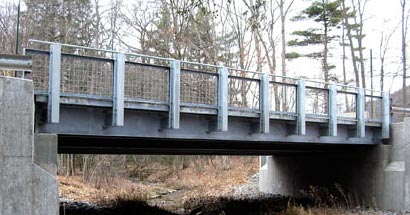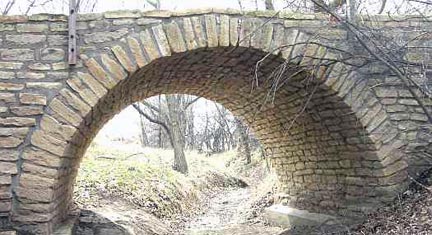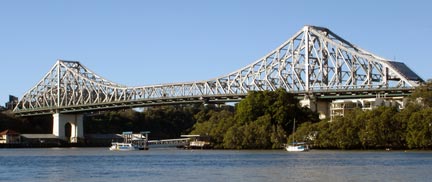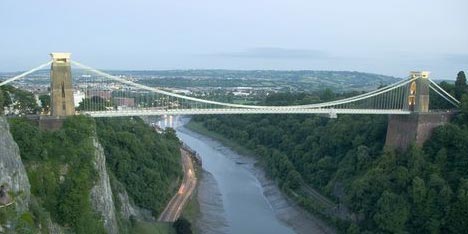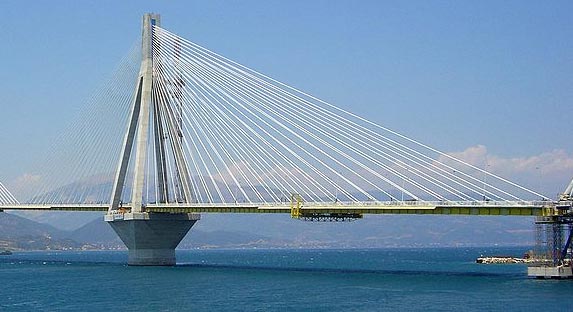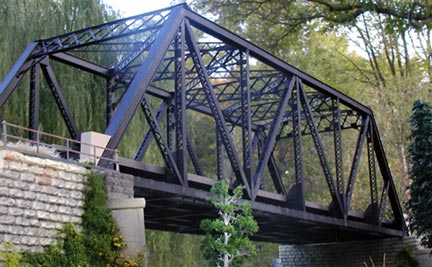Types of Bridges
Back to Papke's page
A bridge is a structure that is used to get from one side of an obstacle (such as a river, lake, or road) to the other side. There are six basic types of bridges shown below. The word Beam comes from the old English word for tree (the first bridges were probably fallen trees or logs). The Pier is the support that the weight of the beam rests on. The Span is the distance from one pier to the next.
The top part of the bridge goes through a process called compression (meaning that it shrinks), while the bottom part of the bridge is being put under tension (it expands).
Definition - the most basic type of bridge. It is made of a simple beam that is supported by piers on either end. The weight of the beam pushes straight down on the peirs. Pros - Easy to build, less cost Cons - Can't be too long, needs lots of supports Uses - Short bridges usually shorter than 250 feet. |
Arch
Definition - this type of bridge has been around for centuries, often being made of stone or brick. Instead of the weight being pushed down directly on the bridge, the weight is transferred along the curve of the bridge to the sides. The sides support the bridge and prevent it from spreading out, and carry the weight of the load. Pros - can be made from natural material, very strong Cons - take a long time to build Uses - can span up to 800 feet |
Cantilever
Definition - the ends on land are firmly supported like a diving board. The two ends that stick out into the middle support a third central bridge called a "span". Pros - very rigid. Building out from each end allows construction without interfering with traffic. Cons - heavy and limited in length because they are only supported on one end Uses - very common over roads |
Suspension
Definition - These are the longest types of bridges. They are held together two large poles that are built into piers that are anchored deep into the ground. From the poles hang two large cables that stretch across and are attached to each side for strength. Pros - they can stretch for long distances, typically the most beautiful, can be built very high to allow large vehicles to pass underneath Cons - expensive to build, cannot hold a lot of weight (like trains), the foundations must be VERY strong Uses - can span 2,000 - 7,000 feet. |
Cable-Stayed
Definition - Similar to suspension bridges except they only need one tower. The cables are attached directly from the tower to the roadway. Pros - much less expensive than suspension bridges. Cons - can be dangerous in high winds, cables require special treatment so they don't corrode and break Uses - Becoming the most popular bridges for medium-length spans of 500 - 3,000 feet (distances longer than cantilever bridges and shorter than suspension bridges). |
Definition - this is a type of BEAM bridge except it has interconnected beams. The beams are in triangle patterns either above or below the bridge to make it stronger. Pros - Greater strength with less material, larger span than a single beam bridge, easy to repair and maintain Cons - not very attractive, can be wasted material if not designed properly Uses - common for train crossings |
Structures and shapes of bridges
